UoSat-2 (UO-11)
UoSAT-2 or University of Surrey sATellite is a British spacecraft in a Low Earth Sun-synchronous Orbit
It was developed and built by a team of enthusiastic radio amateurs and engineers in the 1980s at the University of Surrey and later the spacecraft was operated by Surrey Satellite Technology Ltd
Also refered to as ‘UO-11’ or OSCAR-11 the satellite also functions as a amateur radio transmitter which can still be recieved today on the 2m ham band
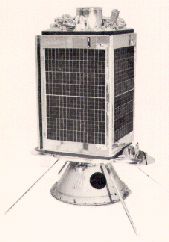
I feel it is very fitting for me to write up about this satellite, at the time of writing this I am a student at the University of Surrey and run the Radio Club on campus, where many spaces I look after have history in being involved with satellite activities
Please enjoy my collected information about this very special satellite!
Table of contents
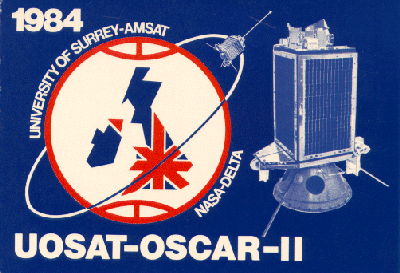
UOSAT-OSCAR-II Mission Card
History
On March 1st, 1984… UoSAT-2 was launched from Vandenberg SLC-2W on a Delta 3920 Rocket, hitching a ride from the LANDSAT-5 mission
I was able to find this video deeply hidden on the University of Surrey servers - sit back and enjoy this lovely clip of the satellite created by Harold Price, NK6K!
Recovered video from UoS file server, video credit Harold Price, NK6K
Did you know, UO-11 was the most rapidly designed OSCAR satellite? - from concept to launch in only 5 months!
It was joked by Martin Sweeting (G3YJO), who pioneered the smallsat revolution with UoSAT-1 + UoSAT-2 and is one of the founders for SSTL, on a video from 2020 that they were still building the satellite hardware on the launchpad but wouldn’t dare to tell anyone at the time
UO-11 was also the first amateur satellite to carry a digital communications package to Earth orbit and the first to be controlled by a CPU running software written in the high-level programming language ‘Forth’
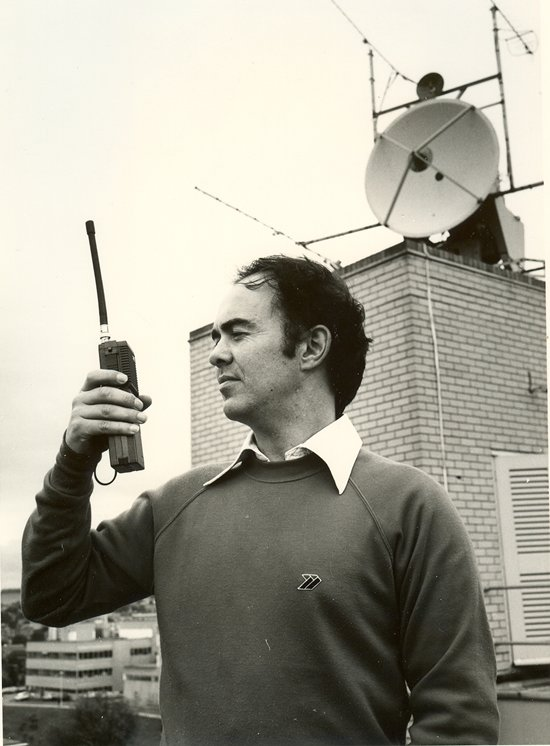
Famous image of Martin Sweeting (G3YJO),
listening to the UO-11 digitalker on a handheld
radio ontop of the now ‘Block BB’ building on the
University of Surrey campus
Recieving
UoSAT-2 can still be recieved to this day, supprisingly after 40 years of operation!
Mode B Beacon:
The spacecraft operates a VHF beacon which transmits AFSK modulation every 30 seconds
Be aware that the satellite operates in a 10.3 day ON, 10.4 day OFF cycle
Beacon Information
- Frequency: 145.825 MHz
- Power: 450mW
- Mode: RTTY
- Baud: 1200 bps
- Char: ASCII-7
The signal can be recieved in any way you would like - however, it is suggested to use a SDR of some kind and a designated satellite antenna
Software
Demodulating UoSAT-2 is a two step process with the software below
MIXW
Having scoured the internet, the only good piece of software I can find to decode a signal at a Baud of 1200 bps is MIXW which seems to be very popular for this purpose
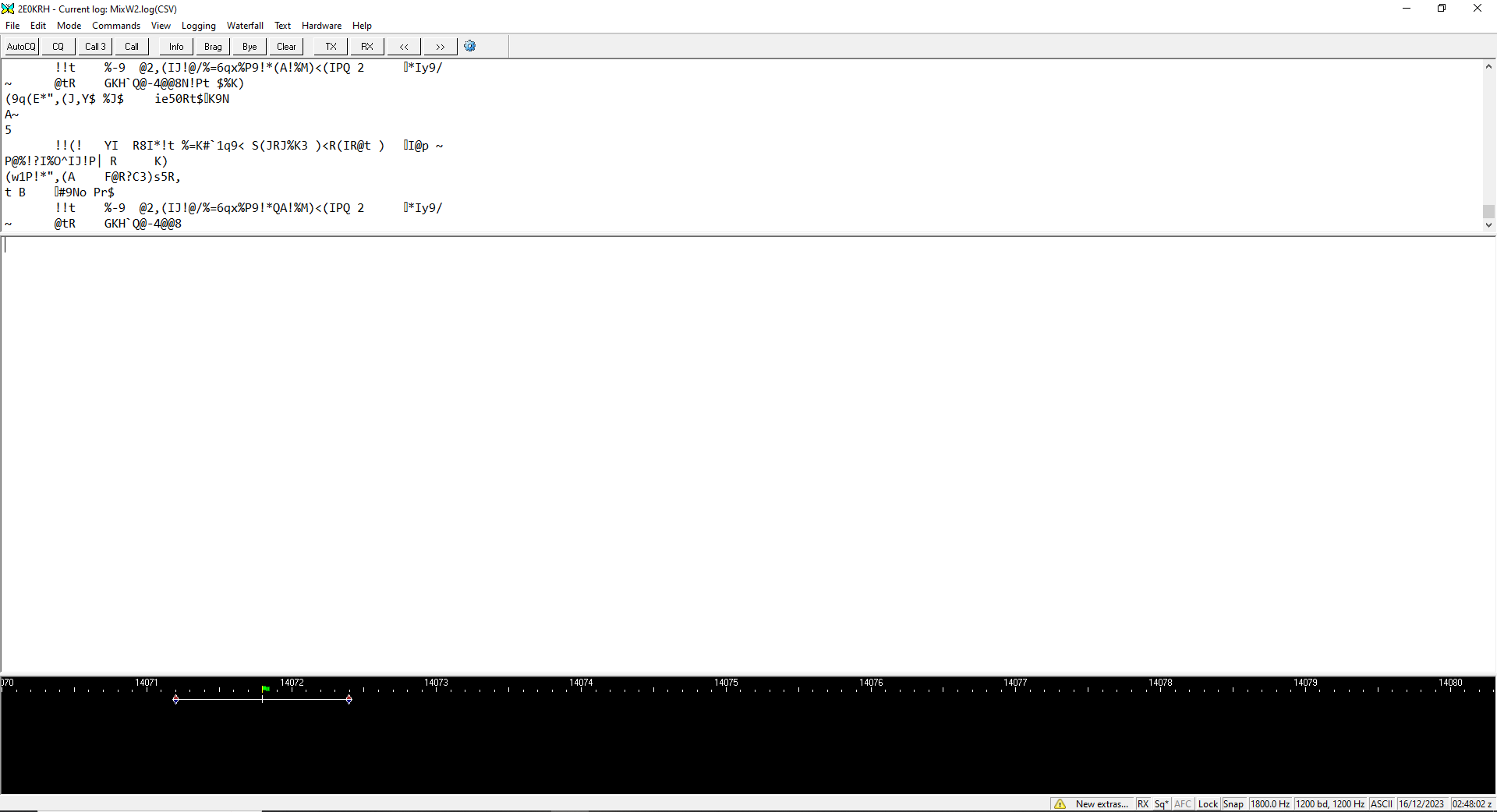
You will need to set the following settings below to recieve the raw data:

The two main settings are to set the Baud Rate to 1200 bps and the Charset to ASCII-7 otherwise your recieved data will be incorrect
These settings can be changed by right clicking the Baud/Shift box on the far bottom right
Here is an example of a decode of the UoSAT-2 satellite showing its raw telemety data
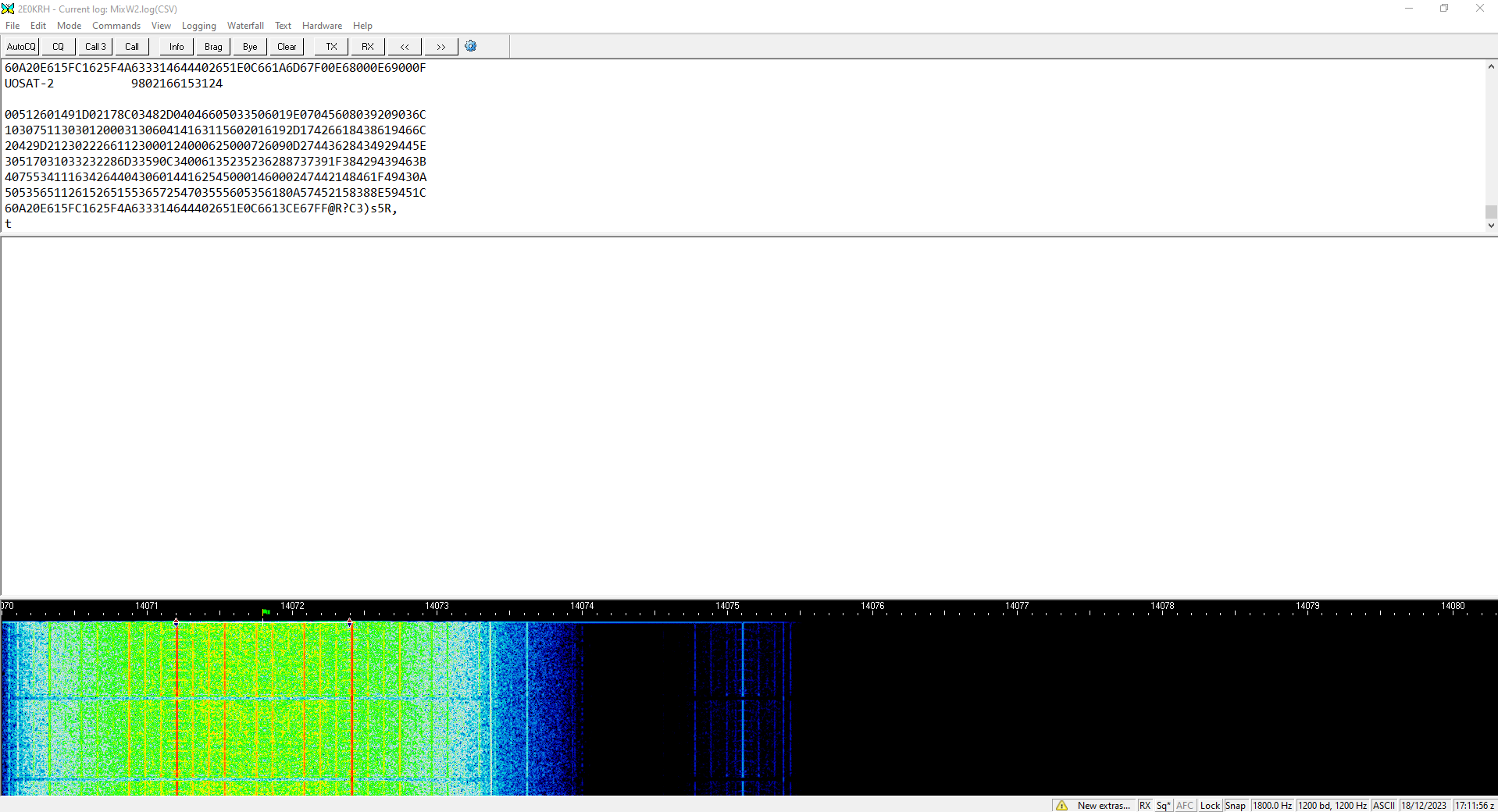
You should end up with something like this, where you will have the text UOSAT-2 followed by a string of numbers and letters
| UOSAT-2 0792214052923 00000001000102000203000304000405000506006070007080008090009 1000011100001200031300d!4 00515005160071700061800091;0008 20000221000322000023000!20010625000726000407000528000A29000B ?a30000331000232000133000034000735000636000537 00438000B29000A 40000041000542000643000744000045800146000247000fm\000B49000D 50000551000452000n5300865400015000056000357000258000D59000C 60800E615FC162010563320564442651E0C6627E@67000168000E69000F |
This data is could be the same repeated by the satellite 16 times in succession
There is usually a few frames of data dropped due to the signal being less than optimal so do not be disheartened - it should still be able to be converted to telemetry data fine
Make sure you save this data from MIXW as a .RAW file with the text data starting with UOSAT-2
U2TM
Even though this is such a old satellite, there are some bits of amazing software - originally written for the BBC Micro
The best I have been able to get going is U2TM which I have archived and can download, full credit to the creator and for making it possible to run in a Windows environment
When running U2TM you will be greeted with this window

Enter the EXACT location of the .RAW file previously created with MIXW and then press return
If successful and a telemetry block has been found, you will be greeted with this
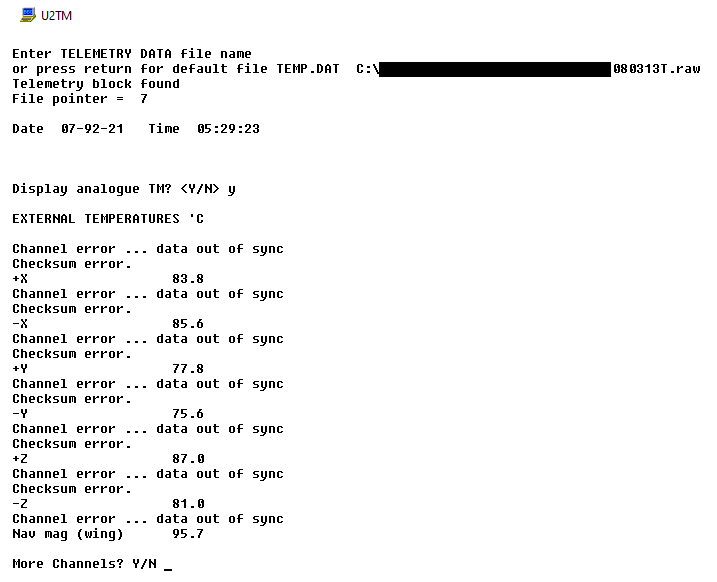
By following the instructions you can cycle and read the telemetry data you have recieved!
References
https://amsat-uk.org/satellites/tlm/uosat-2-oscar-11/
https://web.archive.org/web/20150413193503/http://g3cwv.co.uk/oscar11.htm
https://www.g0kla.com/amsat50/uo-11.php
https://www.satblog.info/
https://www.dk3wn.info/wp/satelliten/uosat-oscar-uo-11/